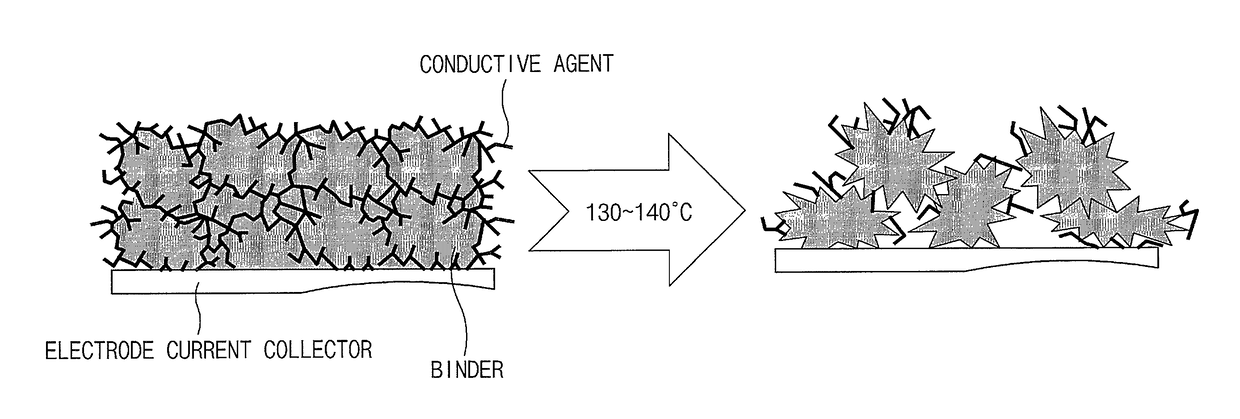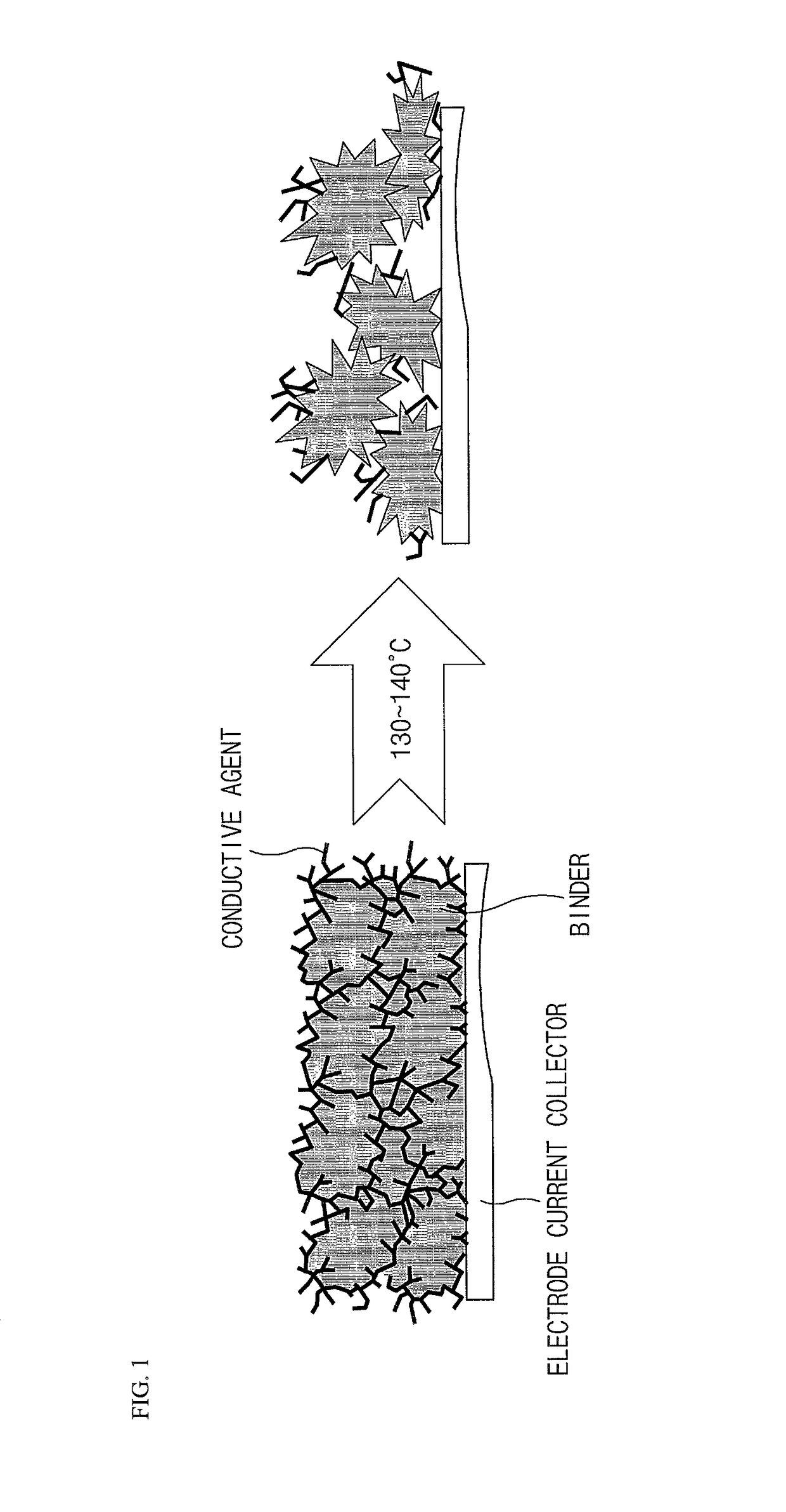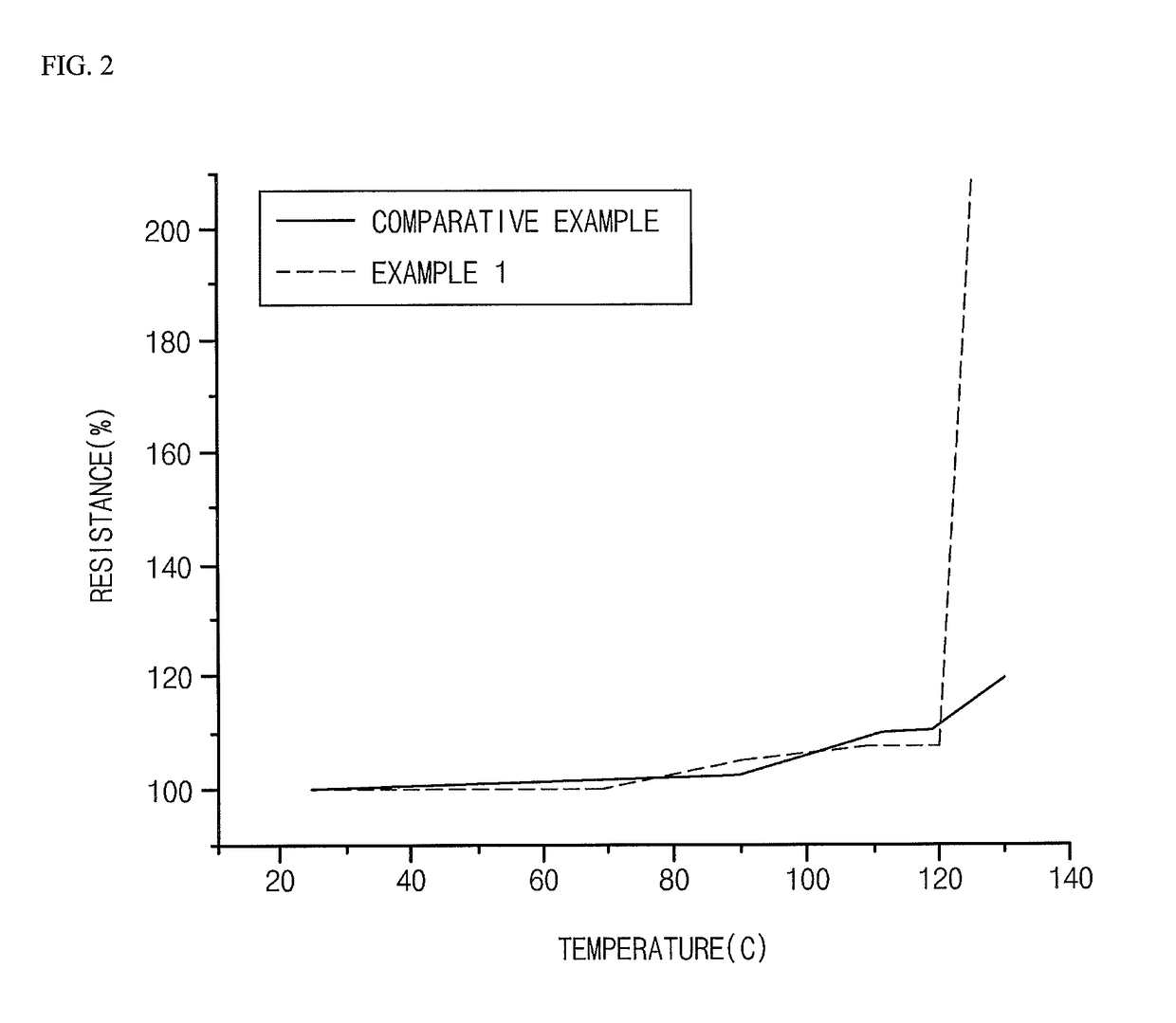Electrode having a dual layer structure, method for manufacturing thereof, and lithium secondary battery comprising the same
a dual-layer structure, lithium secondary battery technology, applied in the manufacturing process of electrodes, cell components, electrochemical generators, etc., can solve the problems of battery comprising such an electrode degrading performance, energy inefficiency, environmental pollution, etc., to prevent short-circuiting of conductive agents and improve the dispersibility of first binder
- Summary
- Abstract
- Description
- Claims
- Application Information
AI Technical Summary
Benefits of technology
Problems solved by technology
Method used
Image
Examples
example 1
[0078]Polyvinylidene fluoride (Mw=380,000) and Denka black (BET=60 m2 / g, DBP=200 ml / 100 g) were dispersed using a Microfluidizer (model name, company name) under a pressure condition of 25,000 psi, and were painted onto an aluminum thin film to a thickness of 2 μm. Here, the polyvinylidene fluoride and Denka black were used in a weight ratio of 7:3. Afterwards, they were vacuum dried for 10 hours at 140° C. and a middle layer was formed on the aluminum thin film. Polyvinylidene fluoride present in the middle layer had a weight average molecular weight of 200,000 and a crystalline phase (α / β) of 0.45. The middle layer thus formed was painted with an electrode active material slurry in which LiCoO2, polyvinylidene fluoride (Mw=380,000), and Denka black (BET=60 m2 / g, DBP=200 ml / 100 g) had been mixed in a 96:2:2 ratio. Thereafter, they were vacuum dried for 10 hours at 140° C., and thus a positive electrode having a dual layer structure was manufactured.
example 2
[0080]A middle layer was formed and a lithium secondary battery was manufactured using the same method as that of Example 1, except for vacuum drying for 10 hours at 150° C. Polyvinylidene fluoride present in the middle layer had a weight average molecular weight of 250,000 and a crystalline phase (α / β) of 0.42.
experimental example
[0083]A comparative analysis was performed regarding the positive temperature coefficient (PTC) effect of each lithium secondary battery manufactured in Example 1, Example 2, and the Comparative Example. The results are shown in the following Table 1 and FIG. 2.
[0084]Here, the analysis of the PTC effect was carried out by measuring the resistance of each lithium secondary battery in an oven while increasing the temperature by 5° C. / min, and determining the interval in which the resistance sharply increased compared to the initial value (the PTC effect).
[0085]
TABLE 1Temperature atCrystalline phase α / βwhich resistanceClassification(at the middle layer)sharply increasesExample 10.45121° C.Example 20.42135° C.Comparative0.15—Example 1
[0086]As shown in Table 1, the lithium secondary batteries of Example 1 and Example 2, which comprise a positive electrode having a dual layer structure with a middle layer of a crystalline phase (α / β) according to the present invention, exhibited a PTC eff...
PUM
| Property | Measurement | Unit |
|---|---|---|
| thickness | aaaaa | aaaaa |
| thickness | aaaaa | aaaaa |
| pressure | aaaaa | aaaaa |
Abstract
Description
Claims
Application Information
 Login to View More
Login to View More - R&D
- Intellectual Property
- Life Sciences
- Materials
- Tech Scout
- Unparalleled Data Quality
- Higher Quality Content
- 60% Fewer Hallucinations
Browse by: Latest US Patents, China's latest patents, Technical Efficacy Thesaurus, Application Domain, Technology Topic, Popular Technical Reports.
© 2025 PatSnap. All rights reserved.Legal|Privacy policy|Modern Slavery Act Transparency Statement|Sitemap|About US| Contact US: help@patsnap.com



